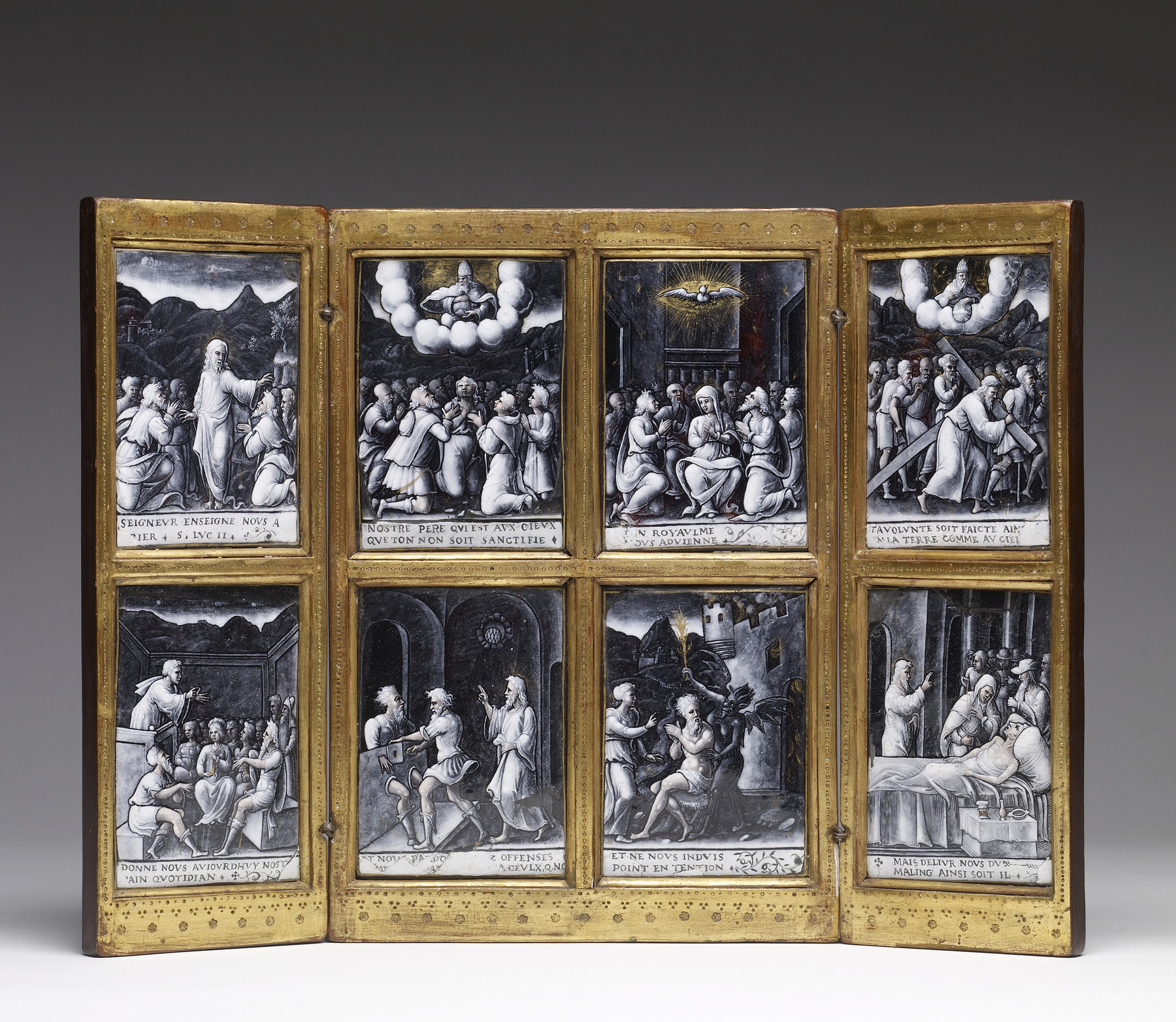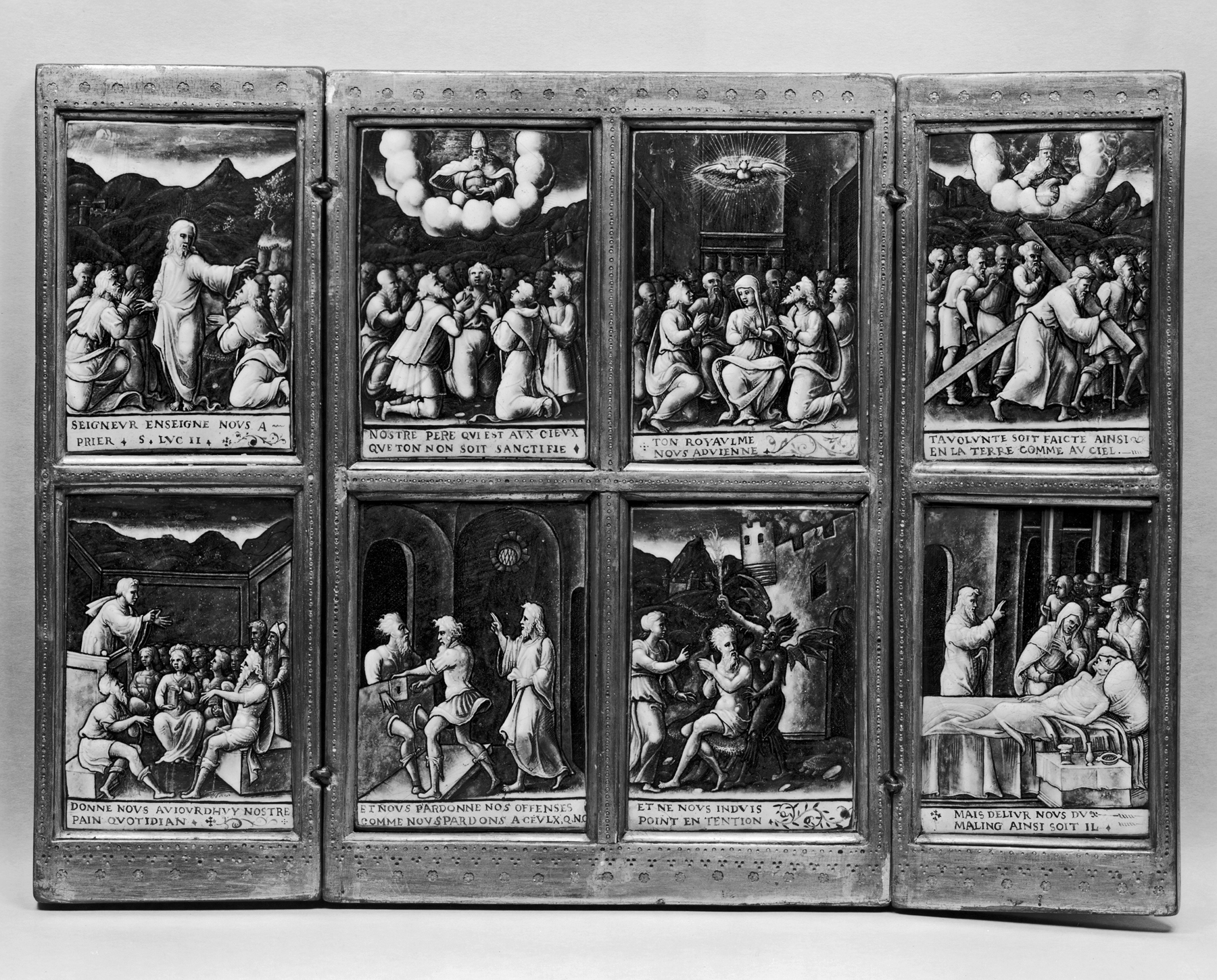Triptych with the Lord's Prayer
(Renaissance Europe )
The Lord's Prayer is illustrated here, phrase by phrase, following the first panel in which Christ is surrounded by his apostles who have asked him to teach them how to pray. The passage translating "Your will be done, on Earth as it is in heaven" is poignantly illustrated by the image of Christ carrying the cross (top right), thereby accepting divine will that will lead to his death. The scenes are derived from engravings accompanying a 1523 treatise on the Lord's Prayer.
This altarpiece format encouraged personal prayer, as did the use of French (not everyone read Latin), reflecting Reform tendencies of the time. By mid-century, the use of "grisaille" (gray monochrome), suggestive of sculptural relief, had gained popularity, although initially mainly for mythological subjects.
The triptych is set in a later gilded wooden frame.
Provenance
Provenance (from the French provenir, 'to come from/forth') is the chronology of the ownership, custody, or location of a historical object. Learn more about provenance at the Walters.
Charles Stein Collection Sale (?), Paris, June 8-10, 1899, lot 30 [without description, dimensions or attribution in the catalogue, p. 10]; Seligmann and Co., New York [date and mode of acquisition unknown]; Henry Walters, Baltimore, 1912, by purchase; Walters Art Museum, 1931, by bequest.
Exhibitions
| 2017 | Uncertain Times: Martin Luther's Remedies for the Soul. The Walters Art Museum, Baltimore. |
| 1982 | God's Minstrel: St. Francis of Assisi. The Walters Art Gallery, Baltimore. |
| 1958 | Religious Art of the Western World. Dallas Museum of Art, Dallas. |
Geographies
France, Limoges (Place of Origin)
Measurements
Overall flat H: 10 3/8 × W: 14 1/2 × D: 1/2 in. (26.4 × 36.8 × 1.27 cm); Display H: 10 3/8 × W: 13 1/4 × D: 3 in. (26.35 × 33.66 × 7.62 cm); Each plaque H: 4 1/8 x W: 2 9/16 in. (10.4 x 6.5 cm)
Credit Line
Acquired by Henry Walters, 1912
Location in Museum
Accession Number
In libraries, galleries, museums, and archives, an accession number is a unique identifier assigned to each object in the collection.
In libraries, galleries, museums, and archives, an accession number is a unique identifier assigned to each object in the collection.
44.363




